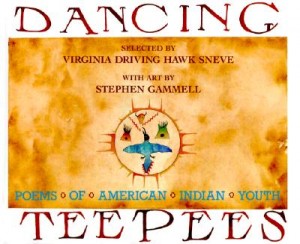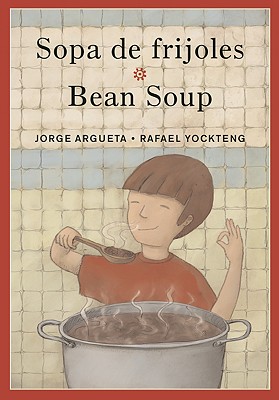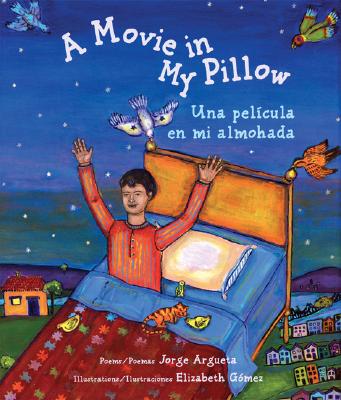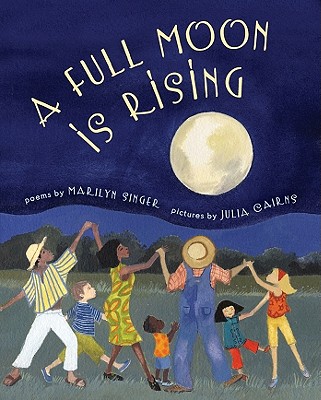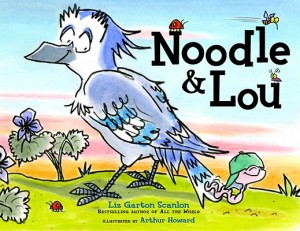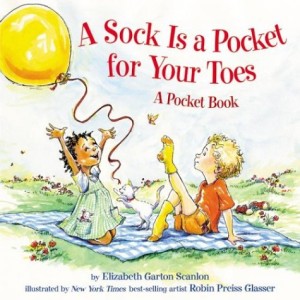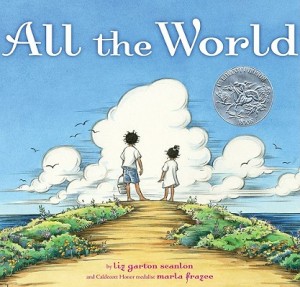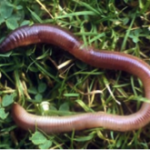It’s the last day of National Poetry Month and this final April Book Room post is an eclectic list specifically selected with my teaching colleagues in mind. I’ve read and used all these books, either directly in my teaching, or as supplements to broaden my own knowledge of contemporary children’s poets and poetry.
THE 20th CENTURY CHILDREN’S POETRY TREASURY, selected by Jack Prelutsky, illustrated by Meilo So is a book I turn to often in the classroom. It’s chock-full of poems that cover a large variety of topics: animals to music, seasons to siblings, good moods and bad, nonsense and more.
It’s hard to chose favorites but, “A Circle of Sun” by Rebecca Kai Dotlich, “December Leaves” by Kaye Starbird, “Grounded” by Florence Parry Heide, and “What Someone Said When He Was Spanked On the Day Before His Birthday” by John Ciardi are near the top of my students’ lists.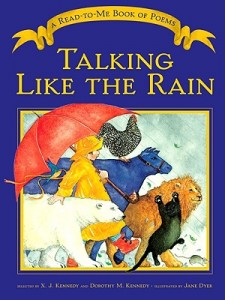
TALKING LIKE RAIN: A Read-to-Me Book of Poems, selected by X.J. Kennedy and Dorothy M. Kennedy , illustrated by Jane Dyer
This anthology includes many poems grouped under titles such as “Play,” “Families,” “Rhymes and Songs,” and “Calendars and Clocks.” Headings such as these make it easy to find poems to share with students any time of year. Several all-time favorites are “Clock” by Valerie Worth, “This is My Rock” by David McCord, and “I Wouldn’t” by John Ciardi.
THE BILL MARTIN JR. BIG BOOK OF POETRY edited by Bill Martin Jr.  with Michael Sampson
with Michael Sampson
This week a teacher at my school asked for suggestions of books with poems about spring and the weather. Among others, (including Joyce Sidman’s Red Sings from the Treetops and Sharing the Seasons, selected by Lee Bennett Hopkins ) I suggested BIG BOOK OF POETRY because it, like so many anthologies, can be a wonderful resource when searching out poems grouped by a theme. Some of the 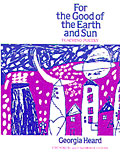 topics included are: Animals, World of Nature, Around the Year, and School Time.
topics included are: Animals, World of Nature, Around the Year, and School Time.
* * * *
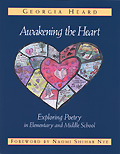 FOR THE GOOD OF THE EARTH AND SUN: Teaching Poetry and AWAKENING THE HEART, both by Georgia Heard, are books I’ve used for years. I particularly like Heard’s Chapter 4 (“Crafting Poetry: Toolboxes”) in the latter, as a way to help students conceptualize the craft of poetry. Heard suggests the metaphor of “meaning and music toolboxes.” It’s one effective construct that helps kids dig deeper and understand the parts that come together to become a poem.
FOR THE GOOD OF THE EARTH AND SUN: Teaching Poetry and AWAKENING THE HEART, both by Georgia Heard, are books I’ve used for years. I particularly like Heard’s Chapter 4 (“Crafting Poetry: Toolboxes”) in the latter, as a way to help students conceptualize the craft of poetry. Heard suggests the metaphor of “meaning and music toolboxes.” It’s one effective construct that helps kids dig deeper and understand the parts that come together to become a poem.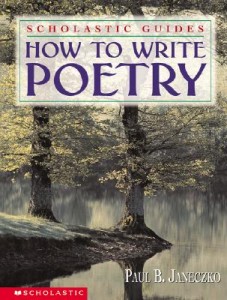
HOW TO WRITE POETRY by Paul B. Janeczko includes plenty of how-to’s with example poems, short writing tips from published poets, as well as “Try This…” suggestions to lead  young writers to become more confident poets. There’s an additional worthwhile section called “POETCRAFT.”
young writers to become more confident poets. There’s an additional worthwhile section called “POETCRAFT.”
POEM-MAKING: Ways to Begin Writing Poetry by Myra Cohn Livingston, is out-of-print, but it’s a book worth searching out, particularly for the chapter called “The Voices of Poetry.” in which Livingston discusses the lyrical, narrative, and dramatic (apostrophe, mask, conversation) voices.
* * * *
Of course, there are many additional resources available for those hoping to learn more about reading and writing poetry. Three excellent sites with lots of teacher/parent/librarian tips and book recommendations to get you started are:
Sylvia Vardell’s Poetry for Children.








